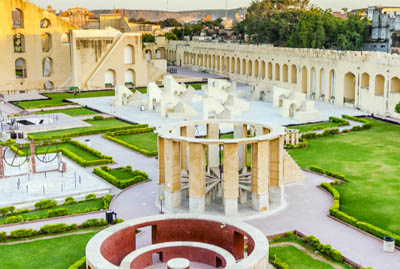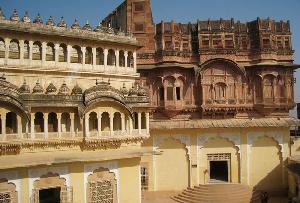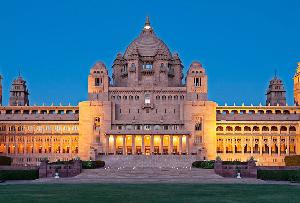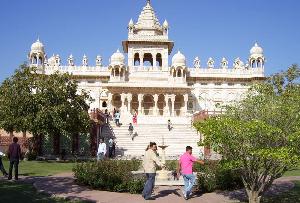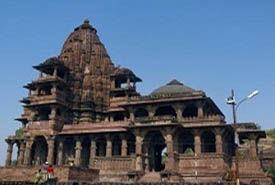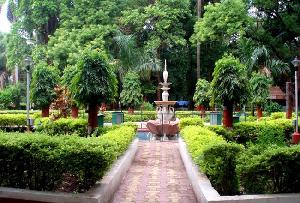Jodhpur, the Blue City, known for its stunning blue-painted houses, majestic Mehrangarh Fort, and the vibrant Sadar Market. This historical city is a must-visit for culture and architecture enthusiasts. With 34 years of expertise, Indian Holiday brings you the best-customised tour packages and trusted local support, ensuring a journey as royal as Rajasthan itself.
Still, wondering why Indian Holiday is your best choice? Read this: Your Complete Guide to Stress-Free Group Travel with Indian Holiday How to Plan a Stress-Free Family Vacation with Indian Holiday
The history of Jodhpur can be traced back to when the Rathores ruled Jodhpur. The Rathores were the proud rulers of the kingdom of Jodhpur until Mohammad Ghori, the notorious Afghan, forcefully annexed Kanauj, the original homeland of the Rathores, thus compelling them to flee Kanauj. By 1453, the Rathores had grown to a number large enough to organize an army and capture Mandore, the capital of Marwar. A matrimonial alliance between Rathore Siahaji and the sister of a local prince strengthened the Rathore stronghold in this particular region.
Raja Maldeo has a significant role in Jodhpur’s history. Under Raja Maldeo, Jodhpur reached new heights and extended its sphere of influence. In the latter half of the sixteenth century, he had Nagore, Ajmer, and Jalore. The Rathores shared a good rapport with the Mughals.
Explore 5 Nights 6 Days Luxury Golden Triangle Tour package, 11 days rajasthan luxury package
Mughal Era
Jodhpur and the Marwar state came under the Mughal Emperor Shah Akbar’s control as a fief during his rule. The Rathore Dynasty bargained for some autonomy and gave the Mughal forces illustrious warriors in exchange. In the latter part of the 16th century, during the intense interstate conflict, the city’s ruler, Rajah Maldeo, expanded its dominance by conquering Ajmer, Nagore, and Jalore.
Shah Jahan received much support from Maharaja Jaswant Singh in his struggle for the war of succession. Jodha Bai’s marriage to Emperor Akbar further deepened the relationship between the imperial house and Jodhpur. The history of Jodhpur is replete with several politically motivated weddings. During the reign of Maharaja Umed Singh, Jodhpur evolved into a fine modern city. Even today, Jodhpur is symbolic of courage and equestrian skills.
British Era
In 1818, the state and its capital, worn out by years of war, allied with the British Empire, earning peace, stability, and a chance to turn around its fortunes. The Marwari merchant elite subsequently took control of Indian trade until India’s independence in 1947, happily reversing the city’s last economic decline.
Browse through our Jaipur Tour Packages from Chennai, Rajasthan Tour Packages from Kolkata
Post Independence
The Marwar state joined the Indian Union after independence was established, and the city was the second-largest conurbation in Rajasthan. The Maharajas of Jodhpur governed the Marwar region and the neighboring Gorwar territory. The Jain community donated significant wealth to Jodhpur due to Gorwar’s incorporation, which improved the city’s financial situation.
Throughout its history, Jodhpur grew to include Mandore, the state’s previous capital, whose ruins can be seen today next to the Mandore Gardens.
The first of Rao Jodha’s buildings, the vast fort built in 1458, still towers over the city from its hill and is in fantastic shape. It features the harem and the opulently adorned palace of the royal dynasty. The Umaid Bhawan, the newest palace in the city and currently home to a five-star hotel, is where the current Maharaja of Jodhpur resides.
Check out Rajasthan Tour Packages, Sand Dunes Tour Packages, Chittorgarh Tour Packages, Mandawa Tour Packages, Jaipur Tour Packages, Luni Tour Packages, Jodhpur Tour Packages





